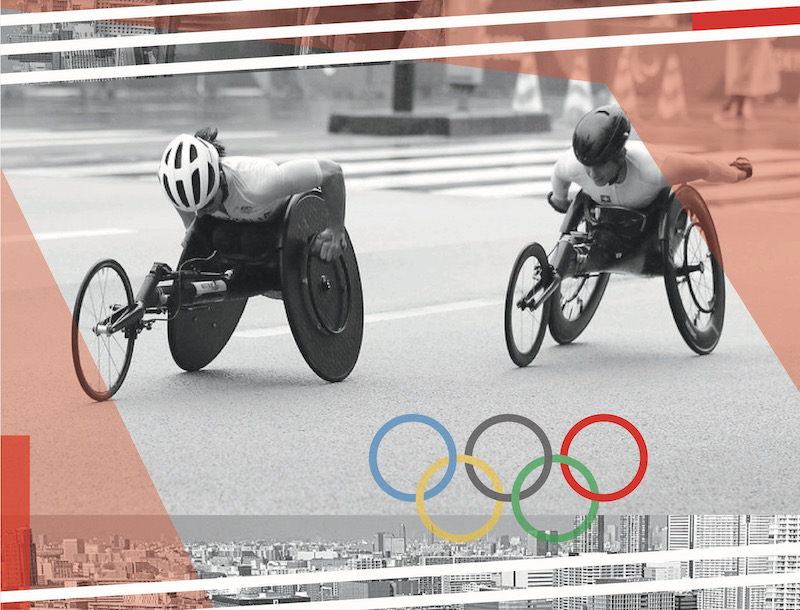
Adrianne Grubic
Ph.D. candidate at the School of Journalism and Media at The University of Texas at Austin and studies media representation in sports journalism. She previously wrote a sportswomen’s apparel in the book chapter, “Just do it: Media coverage of Muslim women in their Nike hijabs.”
Twitter: @adrianne_grubic

Section 5: Politics of Sport
- The sacred space of the Olympics
- At Tokyo Games, athlete activism takes front row seat despite IOC’s attempts to silence athletes
- Forced hijab and female athletes in postrevolutionary Iran
- Pay equity and the Tokyo 2020 Olympics
- We want reform
- The revolt of the Black athlete continues
- The colonization of the athletic body
- Anti-Olympics activism
- Rooting for U.S. Olympians: Patriotism or polarization?
- The new kids on the block: Action sports at the Tokyo Olympic Games
- Black women and Tokyo 2020 games: a continued legacy of racial insensitivity and exclusion
- “A ceremony for television”: the Tokyo 2020 media ritual
- Softball’s field of Olympic dreams
- Equal remuneration for a Paralympian
- Is there space on the podium for us all?
- The Tokyo Paralympics as a platform for change? Falling well short of sport and media ‘opportunities for all’
- Tokyo 2020 Paralympics: inspirations and legacies
- What social media outrage about Sha’Carri Richardson’s suspension could mean for the future of anti-doping policies
- Now you see them, now you don’t: Absent nations at Tokyo Paralympic Games
- Will #WeThe85 finally include #WeThe15 as a legacy of Tokyo 2020?
- WeThe15 shines a spotlight on disability activism
- Activism starts with representation: IPC Section 2.2 and the Paralympics as a platform for social justice
- In search of voice: behind the remarkable lack of protest at the Tokyo Paralympics
Every couple of years, give or take a pandemic, the megaevent of all megaevents takes place, the Olympics. It is one of the few athletic competitions where sportswomen are given greater television exposure than their male counterparts. Unfortunately that exposure can entail much more than their athleticism, as the focus often shifts to how they look and what they are or are not wearing.
Before the reinvented 2020 Tokyo Olympics even started, controversies cropped up over women’s apparel. The Norwegian women’s beach handball team was fined 1500 euros for wearing shorts instead of bikini bottoms during their European Championship game. League officials citing “improper clothing” as a rationale for the punishment. The team knew they would be fined for their action but felt more comfortable performing their sport in shorts since bikini bottoms often ride up. The men get to wear shorts so why, they dare ask, can’t they do the same?
Not missing a beat, the International Swimming Federation (FINA) was also in the news for not allowing the use of the Soul Cap in the Olympics. Designed specifically for swimmers with Black hair, FINA originally claimed there wasn’t a need for the Soul Cap and that it did not follow “the natural form of the head” but reversed course after facing backlash, including an open letter by 14 U.S. Senators demanding the caps be allowed for use during the Tokyo Olympics. However they are still limiting the use of the cap to education and training purposes only. In the predominantly white sport of swimming, having this barrier to competition for minorities means they are less likely to continue on in the sport, because of this you will continue to see more Katie Ledeckys than Alice Dearings.
Meanwhile paralympians are also facing double standards as an official chastised track athlete Olivia Breen at the English Championships for her sport briefs for being too revealing despite Breen wearing the official brief by Adidas for competitions. Feeling comfortable is essential for any athlete to perform their best. When the Olympics finally did start, Germany’s women’s gymnastics forsaked the traditional high-cut leotard that bares the leg in favor of ankle-length unitards as a response to the sexualization of women’s bodies in the sport. A stark reminder of the sexual abuse countless gymnasts have faced while practicing their sport.
So how did we get here? Sport gives this illusion that everyone is competing on an even playing field but for those who identify as women that is often not the case. Sportswomen are continually subjected to arbitrary rules by male-dominated governing bodies in regard to their dress. Some sports columnists and academics (mainly women I might add) are pointing out the hypocrisy and the issue of the sexualization of sportswomen during athletic competition. Some athletes have fought back in the way that they know how, by altering their dress and taking to social media, but for many others on the world’s biggest stage they have no bodily agency over what they wear. Let there be no doubt about it, this is not about guidelines for performance enhancement or safety in sport, this is about the control of women’s bodies and conforming to western ideals of femininity.
The Representation Project’s #RespectHerGame study on the media coverage of the 2020 Tokyo Olympics found that athletes in women’s sports wear revealing outfits in competition 69.9% of the time compared to 53.5% for men. The increase of prime time coverage of women’s sports by NBC meant sportswomen were also 10 times more likely to be objectified by camera angles during the broadcast. Women’s apparel is still an issue despite the International Olympic Committee calling this the most gender equal games, with 49% of the competitors identifying as women but what equality looks like and actually is in practice are two very different scenarios. Men get to be athletes. PERIOD. FULL STOP. Women continue to be sexualized, infantilized, trivialized, or put on a pedestal as the mother of all mothers by the media but never get to be just athletes. These issues with apparel are symbolic of ongoing systemic issues that women continually face and need to be examined not just when the world’s biggest spectacle takes place. Governing bodies need to be actively recruiting women, minorities and LGBTQ+ in efforts to acknowledge the changing sports landscape to make everyone feel comfortable in whatever uniform THEY choose to wear. Then and only then may we truly have a gender equal games.

